
I am beginning this series posts with an evaluation of my living room(s). The first had several reincarnations and I always think it is interesting to see the same room decorated in several different colors and moods using mostly the same things and furniture. Sometimes that decorating bug strikes and a new wall color becomes necessary – or an entire new mood. Perhaps it is all related to being snowed in during the long winter – and they are long here in New Hampshire or it a direct infection of that design bug. Whatever.
Our New Hampshire home was purchased in 1989 but built in 1790. This farm house was on a small hill surrounded by 200 acres and was a very traditional Colonial in style. If you are interested in similar architecture, Treena Crochet’s book Colonial Style, documents via photographs and detail description several homes in the NH area including several images from ours. The house was not in good condition and, as thus, had sat for many years waiting to become loved again while the grass grew and the Christmas trees were thrown out the back door and turkeys and iguanas were raised inside. In short, it was a Project of the greatest sort-heck, even the swimming pool had been used for target practice and then a garbage dump. BUT it had good bones, wide planked pine (although painted) floors, and ceilings which were higher than average. It was clear that it had been special all those many years ago – before Lewis and Clark ventured West – and some of that love lingered. It was also (this part is directly related to a male gene) AFFORDABLE and so, we bought it.

The original plan would be called a center chimney colonial as all of the original rooms revolved around a center chimney with each room having a fireplace. On the original lower level was, to the left a parlour, a kitchen across the back with a mourning room and birthing room at each end and a lower bedroom to complete the lower circle. The birthing rooms were built near the kitchen and center of the home for those who were sick, delivering babies or had a need to be near the warm hub without being in the way. The opposite was true of the mourning room – there for the purpose of gathering to say good-bye. If one wanders in the family cemeteries or reads some of the early histories, it is immediately obvious that both of these rooms were used a great deal and that the families of this time were able to tend to occurrences we avoid or pass on to others today.
In the lower level all of the original fireplaces remain as well as the pumpkin pine floors in the living areas and den. The kitchen fireplace was very large and complete with an iron crane used to hold pots over the flame. Both the living and den fireplaces were smaller and of the Rumford variety. The house did not boast Indian shutters which are interior wooden shutters and I was sorry about this. However, the living room did possess attractive and elegant twisted molding around the fireplace and the windows.

The upstairs had had some remodeling done and consisted of three good sized rooms with closets and two baths as well as a second staircase leading to the original kitchen. At some time the fireplaces had been sacrificed for closets – not an awful thing and all of the floors were still the beautiful wide pinewood work. An area not yet mentioned is the existing kitchen and attached carriage house and these I will show you later but for now remember that they exist. The rooms in the down stairs actually require minimal work in order to make them ready for furniture. I had decided that the living room would remain the living room; the bedroom would be a den and the former kitchen would be the dining room. The first job was to Bulk up the existing molding. There was, as I have indicated, molding on the fire surround and around the window frames but none at the ceiling. I view this as very necessary and so I added two layers of crown. Two runs make a substantial crown that looks finished and solid and provides a clear delineation between ceiling and wall.
The only other major “surgery” needed was to strip the paint and refinish the pumpkin pine floors. When I refinish floors, I do not use a final coat of polyurethane. Instead I end the process with color and will thereafter wax and buff as needed until a patina develops. If you have pets (who doesn’t) and your floors become scratched, I find a dab of Old English Scratch Cover does a fine job. I know this involves a bit of work but I find the end result to be worth it. I may mix the scratch cover with Johnson’s Paste Wax and then buff to a soft shine or, quickly dab and rub it in well. This also does a fine job on furniture scratches.
Now the three living areas are complete with crown, newly cleaned and waxed floors and ready for their first (by me) coat of paint. Some decisions are easily made because they are the product of what we are comfortable with, have lived with for a long time or necessary to compliment the possessions which will inhabit them I have long-lived a red, white and blue life. This began with a collection of blue and white transferware and was cemented by the gift from my parents of an antique Mahal oriental rug in navy, red and white. This rug was purchased at an estate sale on Ocracoke Island, N.C. many years ago and was an odd size and no matter where I lived after its gift, it always fit in some room. Here it was perfect for the dining room which freed me up to deviate a little in the living room so that for its color I chose yellow.
Yellow is a warm color which I find especially inviting after a day away. Returning to see the glow of yellow has been warming AND WELCOMING TO ME, ESPECIALLY WHERE the weather is often incumbent (read snow and rain). Yellow can easily turn green so it is good to do several test runs - two coats and view morning, afternoon and night before a final decision is made. Farrow and Ball has a few very mellow, creamy yellows as does Benjamin Moore. With the sample pots available today, it is easy to try several colors.

The second large decision was the rug. Now that the oriental was not dominating the rooms color I wanted to move into a brighter, younger sphere and so I chose a white wool with blue trellis and a blue and white ribbon border. The rug was lovely until a furnace repair man tracked oil and greasy dirt over it and thus began another saga. I must say that I can not think of a more forgivable rug than an oriental for truly living on. The furnace man did not ruin the dining room rug which he passed over to reach the living room and who knows what other transgressions have taken place on that rug including numerous parties and holiday celebrations. There is a rug for how you live and it does deserve really thinking about before you buy. There are also a huge number of choices available –well worth the research.
Everybody, as I have mentioned because this is real life, has things to lug from house to house and so I present my navy mohair (cat heaven) sofa and chairs. Navy seems like such an easy color but it is an amazingly difficult job to find a true navy. I was fortunate to find it in this mohair and it lasted until I elected to get rid of it – and it still looked great on its way out. Mohair is one of the few fabrics which can take abuse and keep on looking good. It is what the English clubs covered their lounge chairs in – not to mention railroad car seats. Drapes – so many choices. Where to start? I think that there are several starting points but for this project it was color and the feeling of an English farmhouse feel for this was, above all, a house in the country. This small soft yellow and white trim is a Cowtan and Tout fabric which comes in many delightful colors and provided enough interest not to be boring with a visual softness that allowed it to operate in conjunction with the blue and white porcelains next to it without too much visual noise. The rosettes were edged in a yellow and white stripe which set them off and they reinforced that English look and the concept of custom made. I like for drapes to be very full – three times if there is space and both lined and interlined. The interlining is the step which adds heft - a necessary ingredient. In New England winters these linings also provide extra insulation – but I would include them anywhere. I do not like drapes to drag on the floor- what is the point of that? They should come to the floor just as a sofa skirt does and can break (a wrinkle where they touch the floor) but that is it. I am fortunate to have a wonderful seamstress who I trust and we communicate well. If you don’t have this, then collect pictures to help explain what you want because words don’t always work in the design world.

The chairs with the marvelous Cowtan and Tout Eaton check have been such a pleasure to own. They have a rush seat and are a combo of casual and comfortable. When I can, I do try to have down seat cushions and you should too. Down does have a fluffing requirement – daily beating to redistribute the feathers and to introduce air to the mix – but it lasts many years and is the most comfortable and luxurious of seats. I think that the red and white check keeps the room lively and provides a bit of punch. I have heard that all rooms need a punch of color – often red or black but I believe that the hit can come in various ways – for instance, height, weight, humor and the unexpected. Be aware of this when you are rearranging and thinking of new introductions into an area –the unusual can be very good or bad. It is a trial and error thing.
Now we are down to the casegoods as we dissect this room. Most, if not all, are antique and have led many different lives. The pad foot English table between the windows has been in many hallways and served both with its leaf up and down although I like it better down. It has marvelous patina and marks, including ink, of age. I have two of these tables – English, medium sized and very useful. Be on the look out for versatile similar pieces. Flanking the sofa is a pair of English pine demi-lune tables – another of those go many places items. At the end of the room is a high boy which echo’s the height of the windows and establishes a new visual plane. A small Chinese table from my grandmother and a French sewing table flank the fireplace. Over the tea table is a wonderful French shelf – a consignment find.
Through it all there is the unifying ribbon of blue willow. When I first began collecting it was the affordable choice of blue and white. Many is the time I would park in front of antique shop and let one of the boys run in and look to see if there was a piece for sale – thus it became a family collection and, as the boys have established their own homes it has followed them home too. It was the memoir I would bring home from trips and the gift hoped for at holidays…any piece was welcome but platters were the best. As a Southern girl, I have always hung platters on the wall, often in lieu of art. As my collection grew I began to fill cabinets, plate racks and to create colorful wallscapes or arch ways over doors…always welcoming. I still love to see a kitchen with a big welsh cupboard filled with blue and white – it seems just right to me.






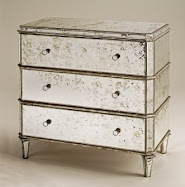





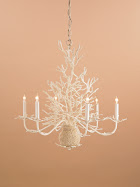
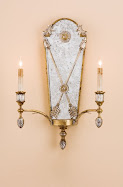

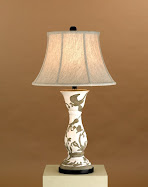



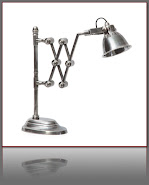





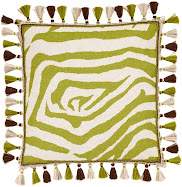

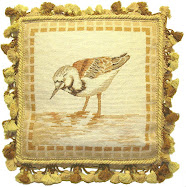
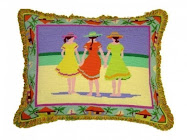



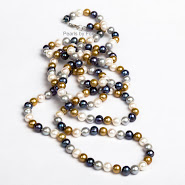












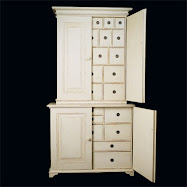

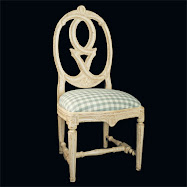


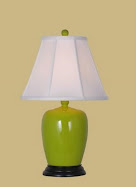








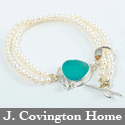

.jpg)
























































4 comments:
Wonderful!
Welcome to Cubby! A new star is born.
Lovely post have followed past articles in shelter mags. Looking forward to future ones. Your home is wonderful.
Thank you so much for this lovely post! This was just the inspiration I needed. I've had a welsh cupboard in storage and I am inspired to bring it into the kitchen and fill it with the blue and white that I have scattered throughout the house.
I can imagine restoring your beautiful home was quite an adventure- hope to read more about it!
Well done, Cubby! Treena
Post a Comment